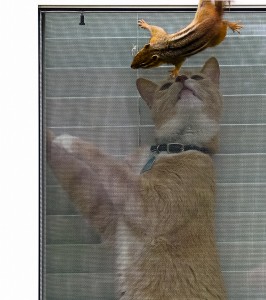Basics of Composition: Subject

I recently had the opportunity to talk to a meetup group about the basics of composition, albeit on short notice. As long as my presentation is still (relatively) fresh in my mind, I thought I’d try to capture a bit of this material in a short series of posts. This, then, is the first in a series that will talk about the role that composition plays in photography, as well as some of the techniques we employ in its pursuit.
Subject, subject, subject
 Before we start exploring the tools of composition, it’s important to understand why you’re worrying about composition in the first place. In order to create a compelling, memorable photo, it’s crucial that you start with a great subject. Have a story to tell, a mood to convey, a tone to paint.
Before we start exploring the tools of composition, it’s important to understand why you’re worrying about composition in the first place. In order to create a compelling, memorable photo, it’s crucial that you start with a great subject. Have a story to tell, a mood to convey, a tone to paint.
The rules and guidelines of good composition exist to showcase your subject. On rare occasions, you might be able to coax a pleasant photo out of a weak subject and well-executed composition, but a great photo needs a strong subject.
Sometimes, your subject will be obvious — in the top photo, I think my subject is pretty self-evident. Luckily for me, I couldn’t move too much, but Chris Botti positioned himself so that he filled my frame without any distractions behind him, so the composition more or less sorted itself out. In some cases, you might be clear about your subject, and the rules of composition will help you draw attention to, enhance, or highlight your subject. At right, the window frames the poor treed chipmunk, but this photo also uses the rule of thirds to position the subject (we’ll talk more about these later).
A means to an end
 The posts to follow are going to touch on a whole range of compositional techniques, including the rule of thirds, use of whitespace, leading lines, repeated elements, depth of field, perspective, and more. Although these ideas might seem overwhelming, remember that (1) you’re not going to be able to use all these ideas together, and (2), the compositional techniques are tools to help support your subject — not the objective of your photography!
The posts to follow are going to touch on a whole range of compositional techniques, including the rule of thirds, use of whitespace, leading lines, repeated elements, depth of field, perspective, and more. Although these ideas might seem overwhelming, remember that (1) you’re not going to be able to use all these ideas together, and (2), the compositional techniques are tools to help support your subject — not the objective of your photography!
I found it easiest to learn one or two of these techniques at a time — go practice the rule of thirds for a while, for instance, until it becomes second nature to line up a photo this way. You might find that when you switch to working on another compositional technique, the rule of thirds fades into your subconscious, but you might be surprised to find it working itself into your photos without you giving it a second thought. That’s the idea here — your mind’s eye will eventually start to see compositional elements in scenes around you as a matter of course, and you’ll find these elements without a second thought. We’ll even talk about some cases when you’ll deliberately break compositional rules. Hopefully by then, you’ll know why you’re doing it!

2 Comments